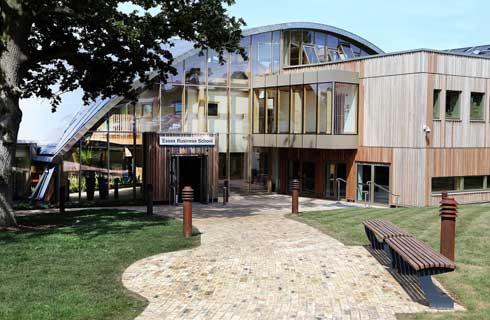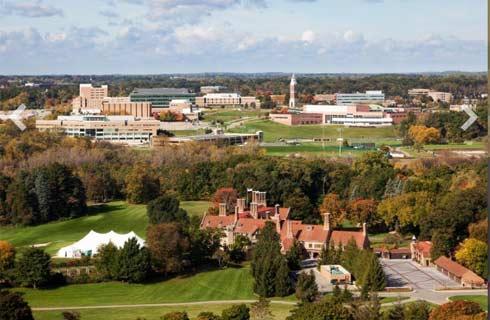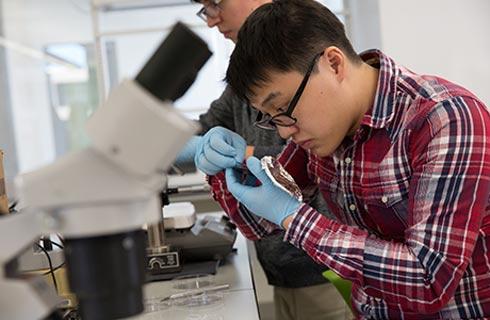- IDP China>
- 课程库>
- 工程与技术>
- 科学技术>
- 工业放射技术>
- Bachelor of Science in Medical Imaging and Radiation Sciences - Invasive Cardiovascular Technology
Bachelor of Science in Medical Imaging and Radiation Sciences - Invasive Cardiovascular Technology

学历文凭
Bachelor Degree

专业院系
Department of Medical Imaging and Radiation Sciences

开学时间

课程时长

课程学费

国际学生入学条件
Transcripts: Submit official transcripts from all regionally accredited institutions you have attended and/or from which you earned credit. Personal Statement: Submit a statement of purpose outlining your interest in the program, how the course of study relates to your desired career path, and your academic and job-related experiences that are relevant to the program. Degree Prerequisite: Applicants are required to submit proof of completion of a Medical Imaging and Radiation Sciences program from an accredited institution prior to the start of the program or have a conferred Bachelor’s degree in another field from a regionally accredited institution before enrolling at Jefferson. GPA Requirement: A minimum cumulative 3.0 GPA is recommended. GPA: minimum 2.75 cumulative GPA
IDP—雅思考试联合主办方

雅思考试总分
6.5
- 雅思总分:6.5
- 托福网考总分:80
- 托福笔试总分:160
- 其他语言考试:Pearson PTE Academic Exam: 53
CRICOS代码:
申请截止日期: 请与IDP联系 以获取详细信息。
课程简介
相关申请
 预科
预科 奖学金
奖学金 实习机会
实习机会 在校学习
在校学习 跨境学习
跨境学习 校园授课-线上开始
校园授课-线上开始 在线/远程学习
在线/远程学习
开学时间&学费
学费信息仅供参考,请与IDP联系以获取详细信息
| 开学时间 | 时长 | 学费 | 地点 |
|---|
关于托马斯杰斐逊大学-INTO USA

托马斯杰斐逊大学位于宾夕法尼亚州费城,是一所拥有 200 年卓越学术经验的私立大学。该大学提供广泛的本科学位课程、近 200 个研究生课程以及一系列专业学习课程。杰斐逊大学最初是一所医学院,在过去的十年中,通过一系列战略合并进行了扩张,其中最重要的是在 2017 年与费城大学进行了合并。因此,该大学现在能够提供广泛的专业学位课程选择,涵盖建筑、商业、人文、医学、科学和纺织品设计等所有学科。根据''Niche 2025'',托马斯·杰斐逊大学在宾夕法尼亚州最佳私立大学排名中名列第12位。该校开设有独具特色的现代化一流课程,旨在满足21世纪的科技和行业需求。杰斐逊西德尼-金梅尔医学院成立 200 年来,共颁发了 31000 多个医学学位,其在世的毕业生人数超过了美国任何一所医学院。该校有30多种专业医疗课程,是宾夕法尼亚州一流的健康教育院校之一。杰斐逊校园占地面积超过 111 英亩,有两个主要校区,即中心城校区和东瀑布校区,位于费城的中心地带。这两个校区都配备了齐全的住宿选择、便捷的学生服务和先进的设施。宾夕法尼亚州和新泽西州还分布着越来越多的其他校园和研究基地。费城拥有丰富的历史、文化和娱乐选择。费城拥有东海岸第三大学生人口,具有包容性和多样性,学生不仅能与美国其他地区保持良好的联系,还能与国际接轨。
本校相关课程

Master of Public Health (Accelerated Format)
学历文凭
Masters Degree
开学日期
课程费用总额


Master of Public Health
学历文凭
Masters Degree
开学日期
课程费用总额


Master of Public Health (Advanced Standing)
学历文凭
Masters Degree
开学日期
课程费用总额


Bachelor of Science in Accounting
学历文凭
Bachelor Degree
开学日期
课程费用总额


Bachelor of Science in Architectural Studies
学历文凭
Bachelor Degree
开学日期
课程费用总额


Bachelor of Science in Animation and Digital Media
学历文凭
Bachelor Degree
开学日期
课程费用总额

其他相关课程

医学放射线技术文凭
 南阿尔伯塔理工学院
南阿尔伯塔理工学院学历文凭
Bachelor Degree
开学日期
课程费用总额


医学影像学学士学位(放射技术)
 长岛大学波斯特分校
长岛大学波斯特分校学历文凭
Bachelor Degree
开学日期
课程费用总额


Bachelor of Science in Radiologic Science
 北肯塔基大学
北肯塔基大学学历文凭
Bachelor Degree
开学日期
课程费用总额


放射技术理学学士学位,具有证书
 哈特福德大学
哈特福德大学学历文凭
Bachelor Degree
开学日期
课程费用总额


Bachelor of Science in Radiologic Sciences
 南伊利诺伊大学卡本代尔分校
南伊利诺伊大学卡本代尔分校学历文凭
Bachelor Degree
开学日期
课程费用总额


辐射科学理学学士
 爱荷华大学
爱荷华大学泰晤士高等教育世界大学排名:342
学历文凭
Bachelor Degree
开学日期
课程费用总额










